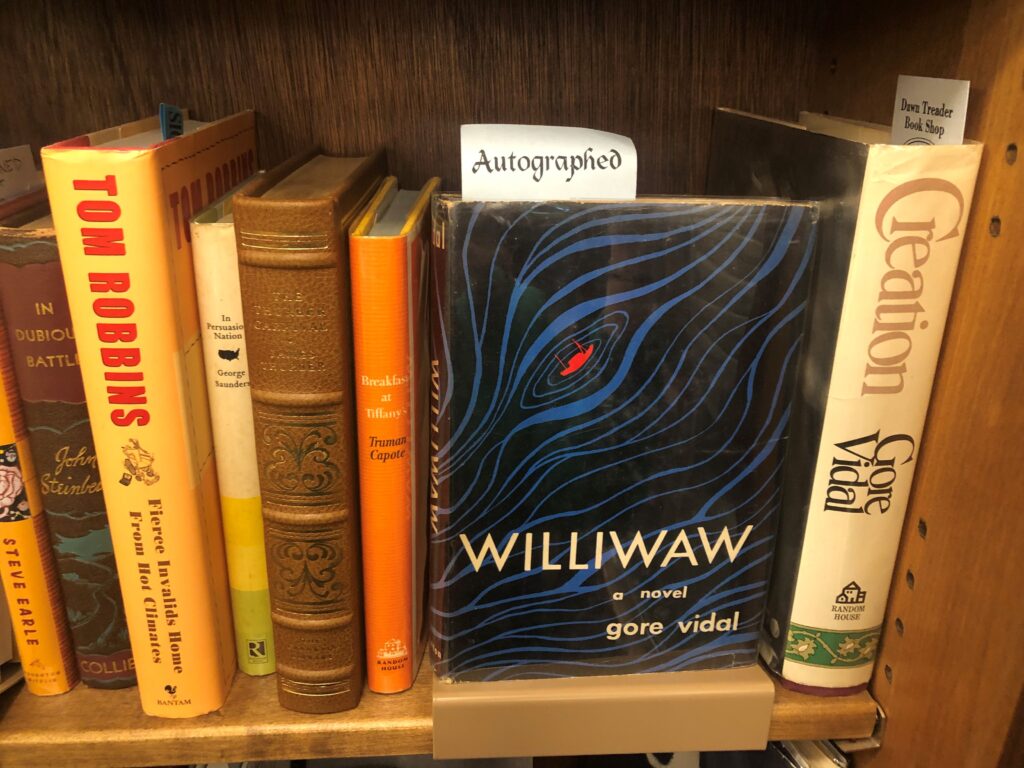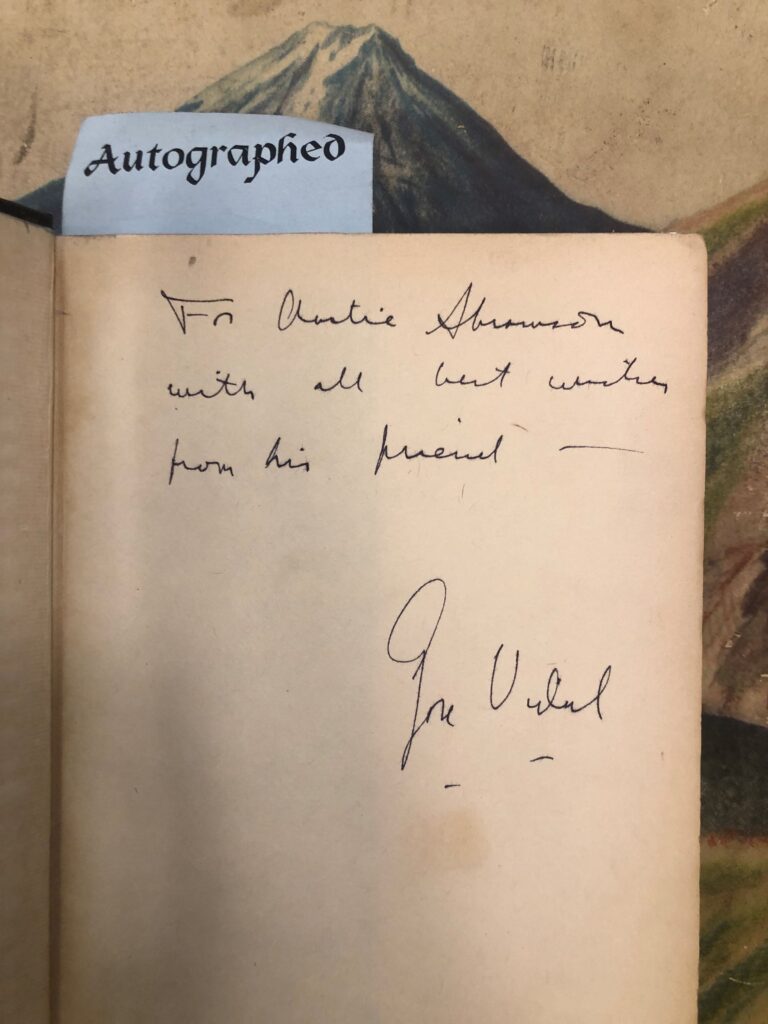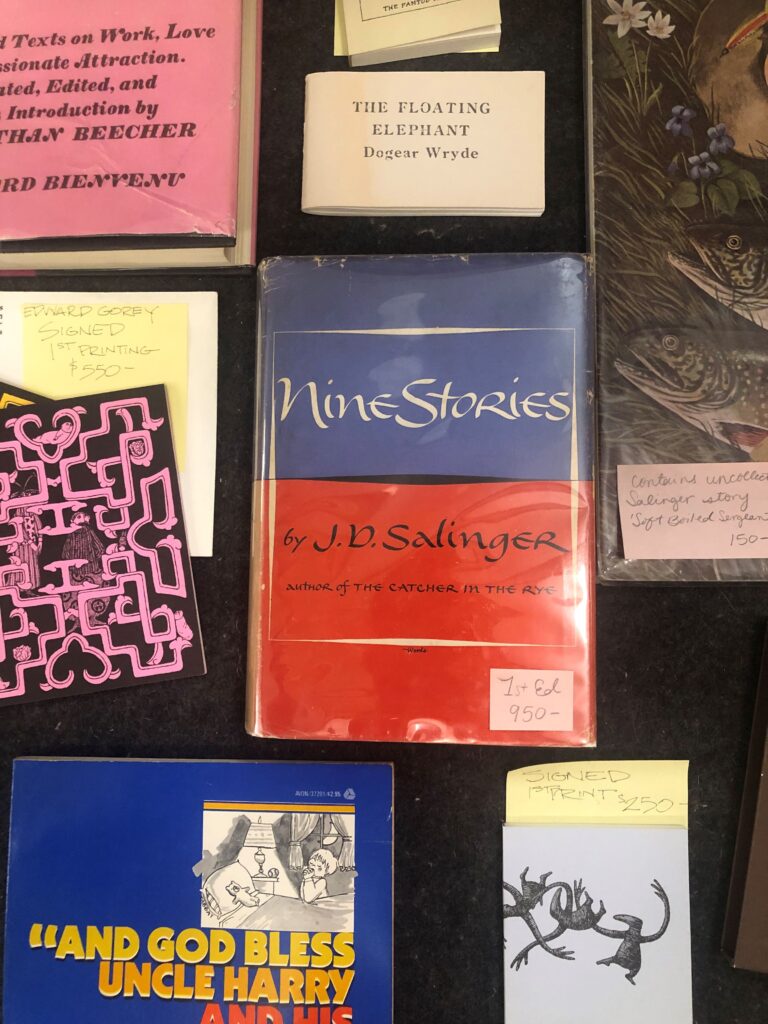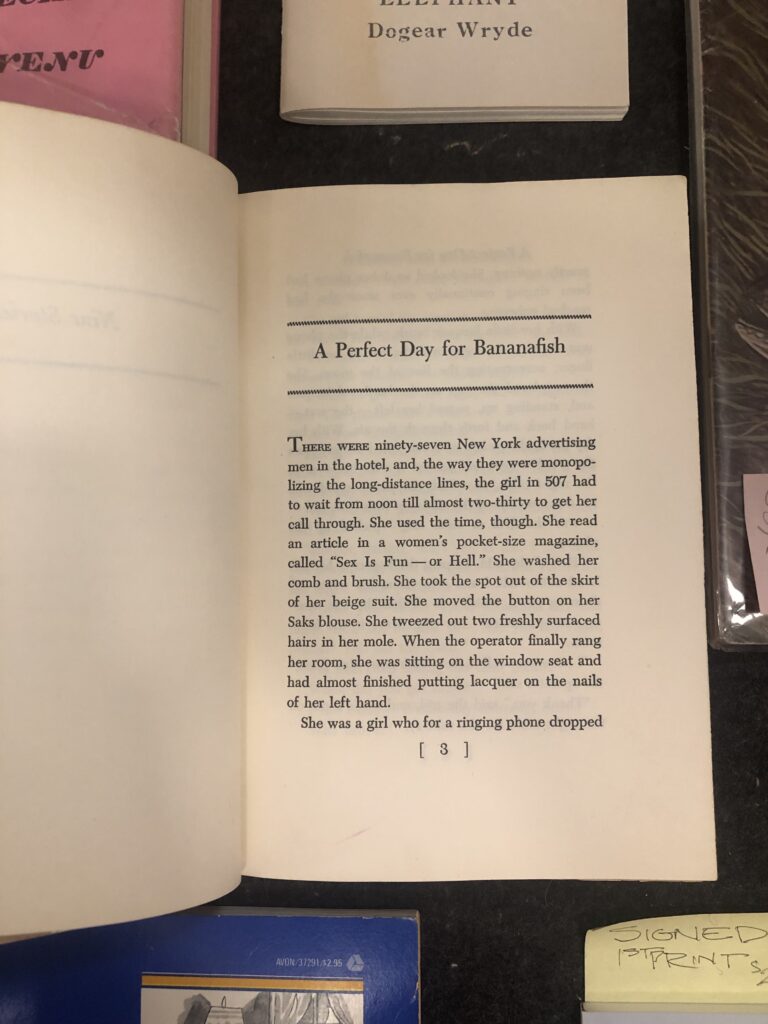by Gore Vidal
SIGNED | First Edition | E. P. Dutton & Company | 1946


Gore Vidal was many things: novelist, screenwriter, sometimes-actor, attempted politician, and a problem child of belles-lettres, to name a few. He wasn’t shy about picking fights with literary giants — there’s even a section on his Wikipedia page dedicated to “Feuds.” Opinionated and polemical as he was, Vidal had an undeniable influence on culture and the writing landscape. He wrote his first novel, Williwaw, when he was only nineteen, thus beginning a prolific career.
Vidal wrote much of Williwaw during his time as an officer in the Army Transportation Corps, stationed near the Aleutian Islands, where the novel’s titular wind phenomenon occurs. Williwaw takes place in the same setting on the margins of World War II, during the local storm season. Its minimalist style and exploration of nature vs. human nature recalls writers such as Hemingway and Stephen Crane, and the novel’s success placed Vidal in an elite category of young post-war novelists like Norman Mailer and Truman Capote (a comparison which would likely spark Vidal’s ire — see “Feuds“).
Despite Vidal’s military upbringing and his own personal involvement in the army, his political views often circled back to a belief that the United States’ militaristic, imperialist foreign policy had turned the country into a disgraceful, failed experiment. In the post-9/11 years, in particular, he vocally opposed the Bush administration’s invasion of Iraq. Not just in the case of war but in any cause towards which he felt a twitch of passion, Vidal nestled snugly into the self-appointed role of “tremendous hater.” He was a man in touch with all the world’s ups and downs, who believed the “downs” to be most prevalent, and who wrote about it all in a body of work equally satirical and deadly serious.
With this first edition of Gore Vidal’s first novel, we can see the seeds of a storied career. The Dawn Treader’s copy even bears his own handwriting — a note to Charles Abramson, an old Broadway Angel and friend of Vidal’s, and his signature — the enduring mark of a prolific provocateur.
(Visit us in the store to see our signed first edition of Gore Vidal’s novel Creation!)


